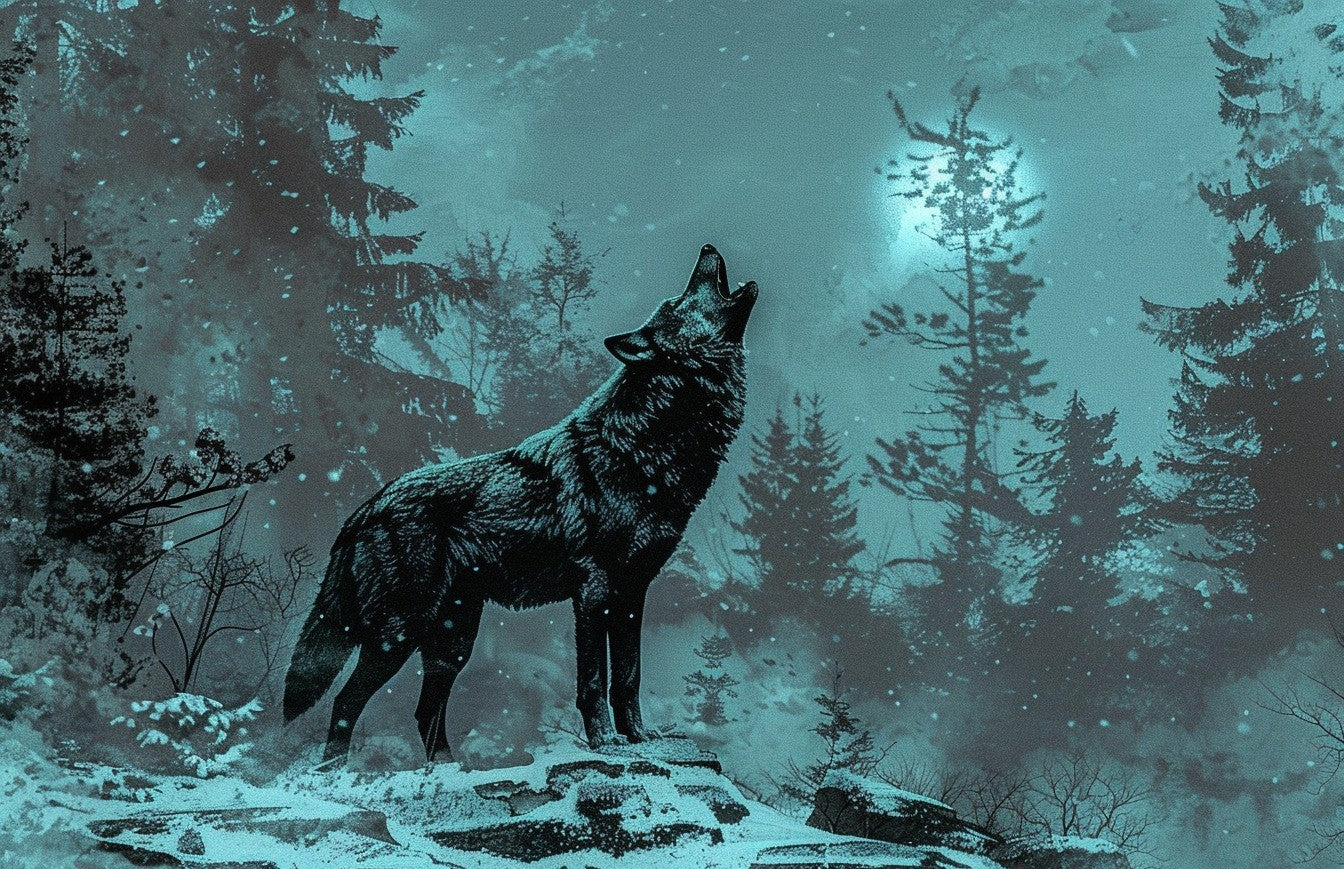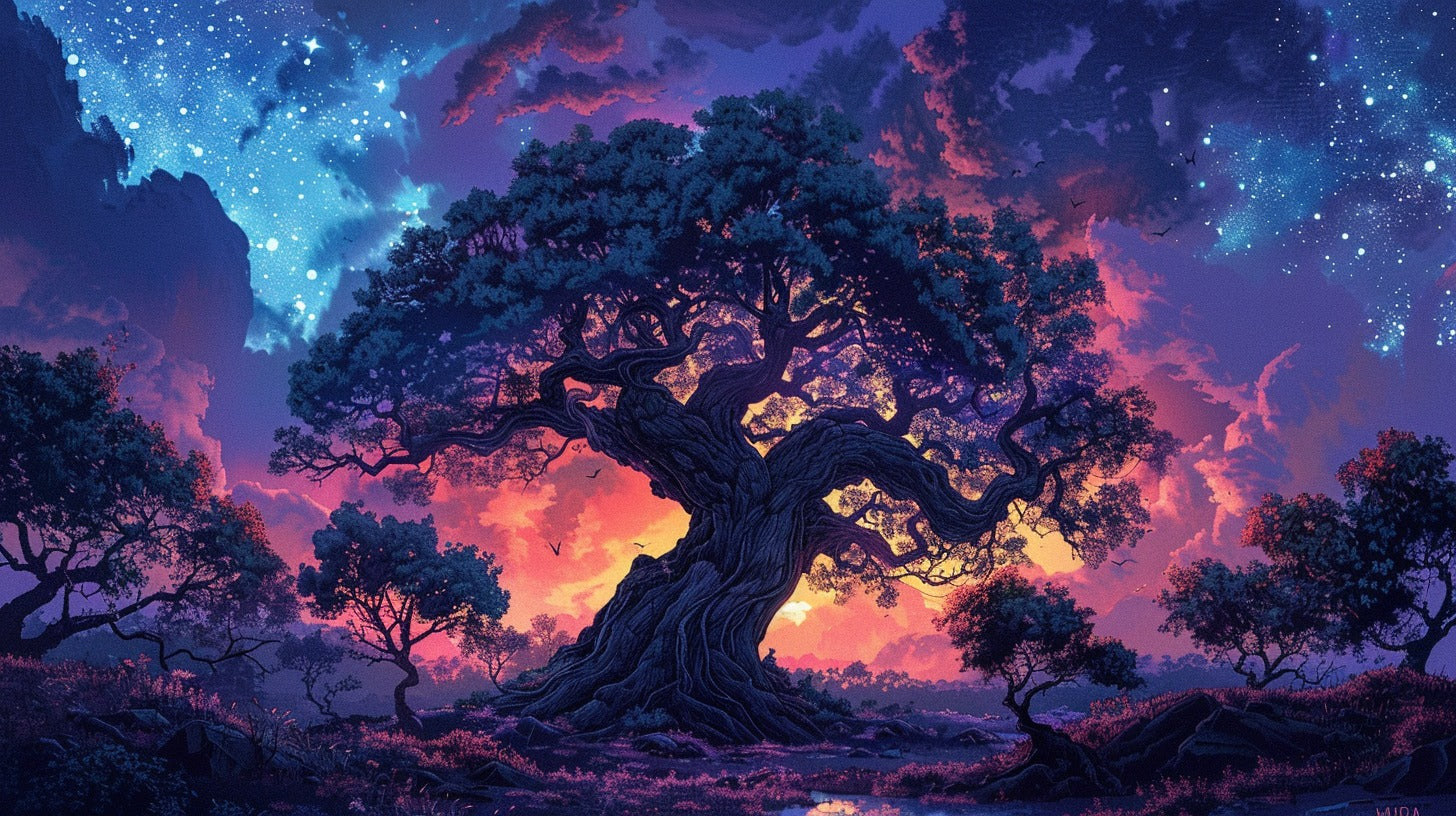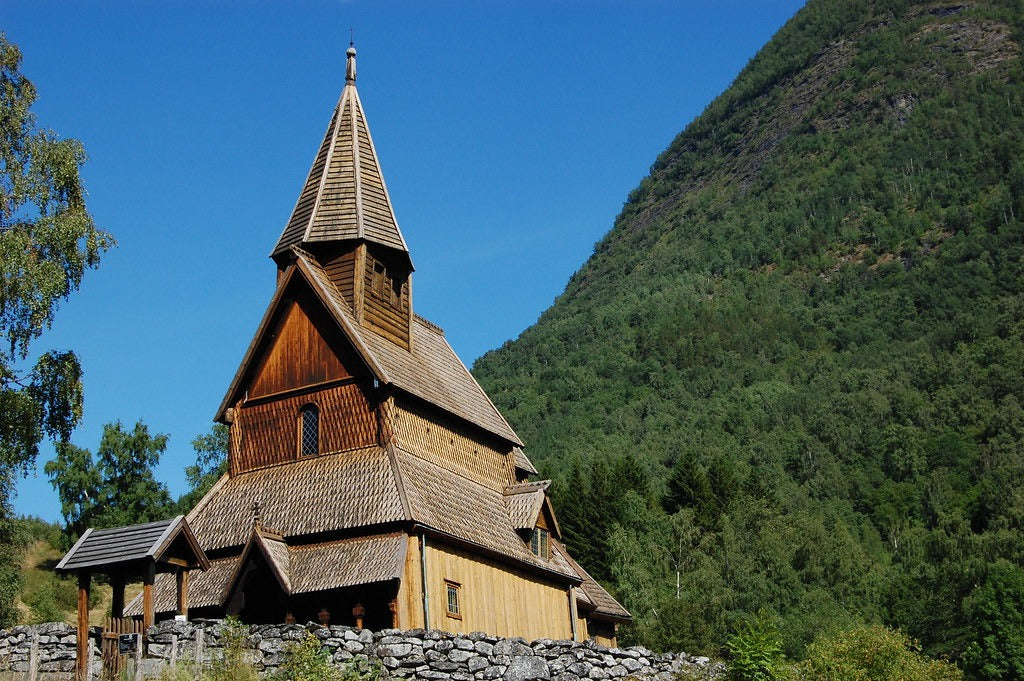
The Wolf's Enduring Legacy in Norse Tradition
The wolf occupies a unique and powerful place in Old Norse culture, representing a fascinating duality of reverence and fear. Admired for its formidable strength, intelligence, and the fierce loyalty within its pack, the wolf mirrors the ideal traits of Norse warriors. Yet, the wolf is equally a symbol of destruction, embodying the unpredictable and often violent forces of nature. This dual nature makes the wolf a fitting emblem of the Norse worldview, where beauty and danger coexist in a delicate balance. Through their mythology and stories, the Norse people expressed a deep respect for the wolf, recognizing it as both a noble creature and a fearsome adversary.
The Wolf as a Symbol of Power and Destruction
The wolf, in Old Norse culture, is a creature of paradox. It is both revered and feared, admired for its strength and cunning, yet dreaded for its destructive potential. Like the harsh Nordic winters that shaped the Norse people, the wolf represents the untamed forces of nature – beautiful, yet deadly.
Wolves in Norse Creation Myths
From the very beginning of Norse cosmology, wolves play a crucial role. In the primordial void of Ginnungagap, it was the wolf Fenrir who was destined to bring about the end of the world. Yet, even in this tale of destruction, we see the seeds of renewal, for in Norse thought, endings are but new beginnings.
Fenrir: The Monstrous Wolf of Norse Legend
Fenrir's Origins and Binding
The tale of Fenrir is one of the most captivating in Norse mythology. Born of the giantess Angrboða and the trickster god Loki, Fenrir was destined for greatness – and infamy. As he grew to monstrous proportions, the gods, fearing his power, sought to bind him.
It took the craftsmanship of the dwarves and the sacrifice of Tyr's hand to finally restrain the great wolf. The chain Gleipnir, made of impossible things – the sound of a cat's footfall, the beard of a woman, the roots of a mountain, the sinews of a bear, the breath of a fish, and the spittle of a bird – was the only thing strong enough to hold him.
Fenrir's Role in Ragnarök
Yet, even bound, Fenrir's destiny was not complete. In the prophesied twilight of the gods, Ragnarök, it is foretold that Fenrir will break free from his chains. In a final, cataclysmic battle, he will devour Odin himself, before being slain by Odin's son Víðarr.
This cycle of destruction and renewal, embodied in the figure of Fenrir, is a central theme in Norse mythology. The wolf, in this context, becomes a symbol of the inevitable end that awaits all things – and the new beginning that follows.
Geri and Freki: Odin's Wolf Companions
The Symbolism of Odin's Wolves
While Fenrir represents the destructive aspect of wolves, Odin's companions Geri and Freki showcase their noble qualities. These wolves sit at the feet of the All-Father in Valhalla, sharing in the feasts of the einherjar – the chosen warriors who have died in battle.
Geri and Freki, whose names both mean "the ravenous" or "greedy one," symbolize Odin's own wolfish nature. Like the wolves, Odin is insatiable in his pursuit of wisdom and power. This connection highlights the complex relationship between the Norse gods and the natural world they both rule and embody.
Wolves as Divine Messengers
In Norse mythology, wolves often serve as messengers or agents of the gods. They are creatures that move between worlds, equally at home in the realm of gods and men. This liminal nature makes them powerful symbols of transformation and transcendence.
Wolves in Norse Warfare and Society
The Wolf as a Symbol of the Warrior
The qualities that made wolves fearsome in nature – their strength, cunning, and pack mentality – were highly valued in Norse warrior culture. Warriors often took on wolf-like attributes, both metaphorically and literally.
The concept of the "lone wolf" was not celebrated in Norse culture as it often is today. Instead, the wolf pack was seen as the ideal model for a warrior band – fiercely loyal to each other, working together with deadly efficiency.
Úlfhéðnar: The Wolf-Skin Warriors
Perhaps the most direct embodiment of the wolf in Norse warfare were the úlfhéðnar, or "wolf-skin warriors." These elite fighters, similar to the more famous berserkers, were said to wear wolf skins in battle and fight with inhuman ferocity.
The úlfhéðnar were believed to channel the spirit of the wolf, becoming something more than human in the heat of battle. This transformation speaks to the Norse belief in the power of animals to lend their strength to humans – a form of shamanic practice that blurred the lines between man and beast.
Wolves in Norse Art and Literature
Depictions of Wolves in Norse Artifacts
The importance of wolves in Norse culture is evident in the art they left behind. From intricate wood carvings to elaborate metalwork, wolves feature prominently in Norse artistic expressions. They are often depicted in stylized forms, their bodies twisting and intertwining in complex knotwork patterns.
One of the most famous depictions is the Fenris Wolf on the Thorwald's Cross on the Isle of Man, which shows the bound wolf alongside other figures from Norse mythology. These artistic representations served not just as decoration, but as powerful symbols that reinforced Norse cultural values and beliefs.
Wolves in Norse Sagas and Poetry
In Norse literature, wolves are a recurring motif, appearing in both the Poetic Edda and the Prose Edda, as well as in numerous sagas. They are often used as kennings – poetic metaphors – particularly in relation to warriors and battles.
For example, in skaldic poetry, phrases like "feeder of wolves" were used to describe successful warriors, implying that they provided plenty of corpses for wolves to feast upon after battle. This grim imagery speaks to the Norse acceptance of death as an integral part of life and warfare.
The Wolf's Dual Nature in Norse Culture
Wolves as Symbols of Destruction and Renewal
The wolf in Norse culture embodies a fundamental duality. It is a creature of destruction, as seen in the figure of Fenrir, but also a symbol of renewal. This paradox reflects the Norse understanding of the world as a place of constant change, where destruction is necessary for new growth.
The Wolf's Role in the Cycle of Life and Death
In Norse thought, death was not an end, but a transition. Wolves, as creatures associated with both life (through their vitality and strength) and death (through their role as scavengers and symbols of destruction), perfectly embodied this cyclical worldview.
The wolf's ability to thrive in the harsh Nordic environment also made it a symbol of resilience and adaptability – qualities highly valued by the Norse people. In this way, the wolf became a teacher, showing humans how to survive and thrive in a challenging world.
Conclusion
The significance of wolves in Old Norse culture cannot be overstated. From the cosmic wolf Fenrir to the warrior tradition of the úlfhéðnar, wolves permeated every aspect of Norse life and thought. They were creatures of power and paradox, embodying the harsh realities of the Nordic world while also representing its fierce beauty and vitality.
Even today, the wolf continues to hold a special place in the cultural imagination of Nordic countries. While the old beliefs may have faded, the wolf remains a powerful symbol of wilderness, freedom, and the enduring spirit of the North.
As we reflect on the role of wolves in Old Norse culture, we are reminded of the deep connections our ancestors felt with the natural world. In an age of increasing disconnection from nature, perhaps we can learn something from this ancient wisdom – to see ourselves not as separate from the wild, but as an integral part of it.
The wolf, in all its complexity, continues to howl across the centuries, reminding us of our own wild nature and our place in the great cycle of life, death, and renewal.
FAQs
- Were wolves worshipped in Norse culture?
While not worshipped in the traditional sense, wolves were highly respected and viewed as powerful spiritual symbols in Norse culture.
- What is the significance of Odin's wolves, Geri and Freki?
Geri and Freki symbolize Odin's wolfish nature and his insatiable hunger for wisdom and power.
- How did the Norse view differ from modern perceptions of wolves?
The Norse had a more complex view of wolves, seeing them as both destructive and renewing forces, unlike the often negative modern perception.
- What were the úlfhéðnar?
The úlfhéðnar were elite Norse warriors who wore wolf skins and were believed to channel the spirit of the wolf in battle.
- How did the Norse concept of wolves influence their art and literature?
Wolves were frequently depicted in Norse art and used as powerful metaphors in poetry and sagas, reflecting their cultural significance.
References
Pluskowski, A. (2006). Wolves and the Wilderness in the Middle Ages. Boydell Press.
Price, N. S. (2002). The Viking Way: Religion and War in Late Iron Age Scandinavia. Uppsala University Press.
Jennbert, K. (2011). Animals and Humans: Recurrent Symbiosis in Archaeology and Old Norse Religion. Nordic Academic Press.
Lindow, J. (2001). Norse Mythology: A Guide to the Gods, Heroes, Rituals, and Beliefs. Oxford University Press.
Gräslund, A. S. (2004). Dogs in graves – a question of symbolism? In B. S. Frizell (Ed.), PECUS. Man and animal in antiquity (pp. 167-176). The Swedish Institute in Rome.








